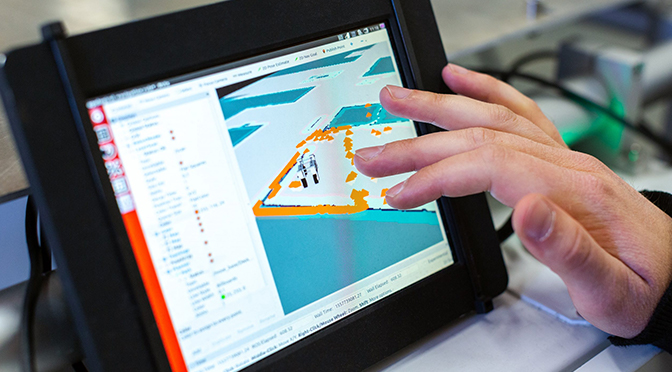Riding The Cloud – The Future Of Transportation Management System
Get In Touch
Your information is protected by our Privacy Policy and Terms of Use.
Our Offices
E 237, First Floor, Phase VIII B Sector-74,
Industrial Area, Mohali-160071, Punjab
Phone: +(91) 93010-10197
6470 East Johns Crossing, Suite 160
Johns Creek, GA 30097
Phone: +1(470)-268-9868
531A, Upper Cross Street, #04-95,
Hong Lim Complex, Singapore - 051531
Phone: +1(470)-268-9868
- Solutions For
- Solutions
- Services & Expertise
- Case Studies
- Insights
-
Get In Touch
Get In Touch
Your information is protected by our Privacy Policy and Terms of Use.
Our Offices
Zapbuild Technologies Private LimitedIndia
E 237, First Floor, Phase VIII B Sector-74,
Industrial Area, Mohali-160071, Punjab
Phone: +(91) 93010-10197Zapbuild Technologies (US) LLC United States
United States
6470 East Johns Crossing, Suite 160
Johns Creek, GA 30097
Phone: +1(470)-268-9868Zapbuild Technologies (S) PTE LTDSingapore
531A, Upper Cross Street, #04-95,
Hong Lim Complex, Singapore - 051531
Phone: +1(470)-268-9868
- Learning Management System
- Command and Control Center
- Transportation Management
- Warehouse Management
- Fleet Management
- Supply Chain Management
- Document Contracts Management
- Load Board Platform
- Route Optimization
- Electronic Proof Of Delivery
- Freight Exchange Platforms
- Customer Relationship Management
- Data Analytics and Business Intelligence
- Logistics Aggregator
- Crowdshipping Marketplaces
- Reverse Logistics Marketplace
From Cost Center to Strategic Asset: Unlocking Profitability in Legacy Systems in Logistics

In the logistics sector, where efficiency and innovation are important, legacy systems are frequently perceived as a barrier rather than an advantage.
These systems, which can be antiquated transportation management systems, obsolete warehouse management systems, or antiquated fleet tracking tools, can seem like pricey relics.
With the right approach, however, these antiquated systems can become strategic assets, promoting operational efficiency and profitability from basic cost centers. Here’s how logistics companies can realize the latent potential in their old software systems.
Understanding Legacy Systems in Logistics
Legacy systems in logistics are outdated technologies used for years to manage many aspects of the supply chain, including inventory, transportation, and warehouse operations.
These systems often find it challenging to satisfy modern requirements even if they can have been novel when originally embraced. They lack the integration ability needed to interact with more contemporary technologies or cannot provide real-time data and analytics.
Notwithstanding their limitations, these systems may offer valuable operational information and historical data that, with appropriate usage, can provide great advantages. Unlocking the latent profitability of these systems calls for initial recognition of their prospective benefits.
The Hidden Costs of Legacy Systems
Legacy systems have several hidden logistics expenses, including insufficient functionality, poor integration, and high maintenance expenses. Maintaining outdated software may be expensive, especially when requiring specialized knowledge or integrations.
Sometimes, these systems also find it challenging to communicate with modern technology, which leads to inefficiencies and hand-made solutions. Still, focusing simply on these drawbacks can obscure the opportunities these systems could offer.
By shifting their perspective from perceiving outdated systems as a waste of resources to considering their prospective strategic worth, logistics companies can find creative techniques to boost profitability.
Transforming Legacy Systems into Strategic Assets
Leverage Existing Data for Insightful Decisions
Legacy systems often offer a wealth of historical data that can be highly illuminating. For example, a historical transportation management system would include thorough records of carrier performance, delivery times, and shipping routes.
Using information analysis, logistics companies may identify patterns, simplify processes, and increase overall efficiency. Businesses may get useful insights from historical data by using contemporary data analytics technology that is capable of interacting with older systems. From this, one may follow more informed judgments, better route planning, and better operational techniques.
Integrate Legacy Systems with Modern Technologies
Consider incorporating old systems with contemporary technology instead of entirely substituting them. This approach allows logistics companies to profit from modern innovations and retain the usable capacity of their present systems.
Combining a cloud-based inventory control system with a legacy warehouse management system, for instance, will help to increase inventory level control and visibility. This link can improve accuracy, provide real-time data, and streamline procedures without a total system redesign.
Automate Repetitive Tasks
Legacy systems require human participation for daily tasks, which is time-consuming and prone to error. Automation may significantly increase the efficiency of these systems by reducing the need for human involvement and, hence, decreasing human errors.
For outmoded systems, robotic process automation (RPA) can, for example, automate human data input required for shipment tracking. Automation solutions help employees to focus on more important tasks by managing boring tasks such as data input, shipment updates, and status notifications.
Enhance System Training and Utilization
Legacy systems can be more effective when users are well-trained and aware of their capabilities. Extensive training sessions ensure employees’ full utilization of capabilities and identification of ways of process optimization.
Better training can help better utilize the system’s capabilities, thereby increasing efficiency and productivity. For instance, warehouse employees who receive enhanced features of an existing warehouse management system can discover new ways to streamline procedures and save handling time.
Optimize Maintenance and Support
Maintaining legacy systems in functioning order depends critically on regular maintenance and support. Create a proactive maintenance schedule to take care of problems before they become more serious and guarantee that your systems remain dependable.
Working with specialist providers who know how to keep old logistical systems in place could be helpful. By providing insights into best practices for maintenance, upgrades, and troubleshooting, these providers assist in increasing the lifetime of your systems.
Explore Incremental Upgrades
Instead of a complete overhaul, consider small changes to your current systems. This approach helps logistics companies to systematically upgrade their systems, therefore lowering risk and dispersing costs.
Small enhancements can also involve adding new modules or features targeted for specific usage without completely rewriting the system. For instance, upgrading the user interface of an outdated fleet management system while maintaining the basic functionality would improve user experience and efficiency.
Utilize Data for Strategic Planning
Legacy systems often store valuable historical data that can be leveraged for strategic planning. Advanced data analytics tools can analyze this data to uncover insights that drive business growth.
This information can inform strategic decisions such as optimizing delivery routes, selecting the best carriers, and improving customer service. For instance, analyzing historical shipping data from a legacy system can reveal patterns in delivery times, carrier performance, and customer preferences.
Foster a Culture of Innovation
Encouraging a culture of innovation within your organization can help you continuously explore ways to optimize and leverage legacy systems. Promote collaboration between IT and logistics teams to identify opportunities for improvement and implement new ideas.
Regularly review your legacy systems to ensure they meet your evolving business needs. Stay open to experimenting with new technologies and approaches that can enhance the value of your legacy systems and contribute to long-term profitability.
Real-World Examples
Several logistics companies have successfully transformed their legacy systems from cost centers into strategic assets.
For example, DHL faced challenges with its outdated fleet management system. Instead of replacing it entirely, the company integrated the system with a modern GPS tracking solution. This integration provided real-time tracking and improved route optimization, leading to increased operational efficiency and cost savings.
Another example is XPO Logistics, which had an old warehouse management system. By integrating the system with a new cloud-based inventory management tool and implementing automation for order processing, the company improved inventory accuracy, reduced order fulfilment times, and enhanced overall customer satisfaction.
Conclusion
In logistics, legacy systems are not always relics from the past. With the right strategies, these systems may be transformed from cost centers into strong levers for profitability and operational excellence.
By using current data, integrating with modern technologies, automating tasks, enhancing user training, optimizing maintenance, investigating incremental improvements, using data for strategic planning, and so supporting an innovative culture, logistic companies can release the latent potential of their legacy systems.
In a competitive and quickly changing industry, the ability to optimize older systems may be quite beneficial.
This approach not only helps to minimize costs but also encourages profitability, effectiveness, and growth. Long-term success depends totally on understanding and enhancing previous systems since logistics companies manage the complexity of new technology.
FAQs
- What is legacy logistics?
In the context of logistics and supply chain management, legacy logistics refers to out-of-date technology, practices, and systems. These systems can lack connectivity with modern technology, which causes inefficiency even if they offer excellent historical data and value.
- What are examples of legacy systems in logistics?
Examples are obsolete transportation management systems (TMS), warehouse management systems (WMS), and fleet tracking tools. These systems may still be useful even if they can be difficult to mix with more modern technologies.
- What is meant by a legacy system?
A legacy system is an old computer system or software application that is used despite the availability of more recent technologies. Though it is still essential for daily operations, it usually has outdated capabilities and is poorly compatible with modern systems.

Looking to build future-ready technology solutions for your transportation or logistics business? Connect with our experts for a free consultation today connect@zapbuild.com
Categories
Trending


What is a Fleet Management System?

5 Ways AI is Revolutionizing Supply Chain Management
Subscribe to our newsletter
Related Insights

Logistics
Predictive Intelligence for Optimized Logistics: From Reactive to Proactive Decision-Making

Logistics
5 Key Reasons You Should Invest in a Logistics Management System

Logistics
Logistics Management Software : Important Things You Should Know

Connect with Our Experts
Take the first step toward the digital transformation of your Transportation and Logistics business.
Get a Free Consultation with Zapbuild’s technology experts today.